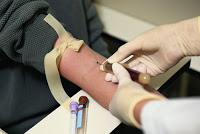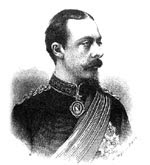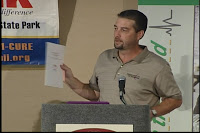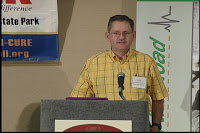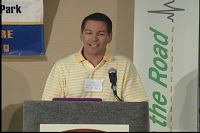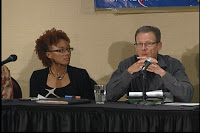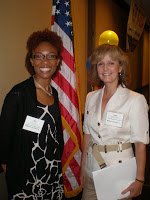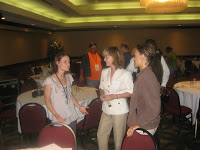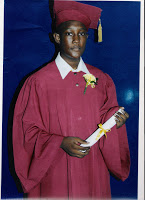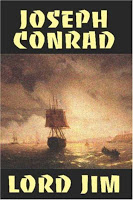From the Philippines to New Jersey

We were really blessed to have a very special visitor last week: Andrea Trinidad-Echavez from Manila, the Philippines. Andrea has von Willebrand disease, as does her third child, Star. She manages the best she can in a country that buys no factor products. Imagine! We’ve tried to help her when we can through Project SHARE. But at some point, the Philippines must lobby to get legislators to approve a line item for factor.
If anyone can do that, it’s Andrea.
She has a journalism background, and also knows scores of high-level politicians. With her charm, poise, intelligence and fierce determination, I believe the Philippines will eventually join the countries in the developing world that buy factor. It’s possible! I point people to Honduras, one of the poorest in this hemisphere, which buys product.
Andrea and I met in October 2008, when I visited the Philippines. I was so impressed with her skills, and was delighted that she could come and stay with us. It was just cool enough that we could have a fire–her first ever in a fireplace!
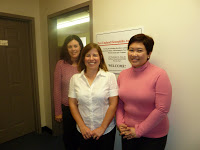

Our first stop was a visit to see Wendy Owen at New England Hemophilia Association, for a meeting about NEHA’s successful lobbying strategies. Then back to Georgetown to meet with our staff. Then down the hall to meet with the ladies at Save One Life to discuss how the program is running in the Philippines.
Andrea discovered our puppet Bob, created by Wyeth (now Pfizer). Bob is a teaching puppet, and you can look into his joints to see a bleed, or check out his port. She loved it and wanted to bring it home to use with the kids.
The next day, Andrea and I were up early to fly to New York City, her first time there! Bob garnered many stares as we sat on the plane, then took the tram through JFK! One passenger walked up and said, “Wassup!” to Bob, who of course didn’t answer!



I took a rental and we drove through NYC to New Jersey, for a visit with Octapharma. We were both interested in this meeting as Octapharma just this year had “wilate,” their plasma-derived VWD product approved. We met with sales reps and executives. Then on to our hotel.
On Thursday we met with the global staff at Bayer Healthcare in Wayne, to speak about factor donations and other projects we have. After that, Andrea took a car to meet with NHF CEO Val Bias, at a restaurant. I had a bad feeling about being in a rental, in NJ, and needing to get to JFK at rush hour on a cloudy day. Sure enough, if you followed the headlines, a tornado blasted through Queens, only about 15 minutes before I arrived. I was on the Van Wyck expressway when it tore through. It was amazingly powerful. When I passed by this over turned tractor-trailer (one of three, all in the same place!) the entire expressway looked like an angry giant had rampaged through it and lopped off the tops of trees, stripped branches completely off trees and crushed cars. Glass, branches, cars.. what a mess! I didn’t get home till 5 am.
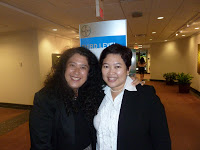 (Photo: With Cindy North of Bayer)
(Photo: With Cindy North of Bayer)
Andrea is bound to learn a lot from some very experienced people like Wendy and Val, and made some great contacts at the companies. We are committed to helping the Philippines improve its health care for hemophilia, but the only way it can be done it by lobbying the government. Andrea and her team now have what they need to get started.
You can read more about Andrea at her blog: www.fortheloveofstar.com
Great Book I Just Read
Great Expectations by Charles Dickens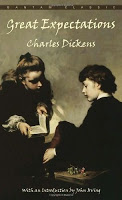
I am ashamed to admit that this is the first Dickens book I have ever read. This is a classic: the story of Pip, an orphan, who lives a difficult life but who one day receives a fortune, from an unknown benefactor, to make him a “gentleman.” Pip is rich, but the humble boy becomes spoiled and vain, and turns his back on those who loved him most. The story shows how our values can change when he suddenly occupies a different station in life. Eventually he learns great lessons of life through strife, evil in others, and heartbreak; every character in this book seems to mature and grow in relation to one another. It’s a great story with timeless characters but it’s the writing–the writing is pure ecstasy, like ingesting literary Godiva’s every other page. I am weighted with words now, beautiful images, witty lines, twists of phrases. I didn’t know writing could be so mesmerizing and purely pleasurable. Four stars!


